Carbon monoxide poisoning may result in an anoxic-ischemic encephalopathy, with acute as well as delayed effects.
On this page:
Terminology
Gas geyser syndrome is a term used to describe symptoms of carbon monoxide poisoning while bathing due to carbon monoxide production from liquefied petroleum gas geysers used to heat water 11.
Epidemiology
Carbon monoxide poisoning is mostly preventable with common causes including malfunctioning heating systems, improperly ventilated motor vehicles, and residential fires 9. It is also observed as an attempt to commit suicide.
Clinical presentation
Patients can present with 10:
-
acute symptoms of headache, dizziness, altered conscious state, seizures
cardiac arrest may occur, see pulseless electrical activity (PEA)
chronic symptoms of cognitive decline, abnormal gait, fecal incontinence
Pathology
The pathophysiology can be two-fold:
carbon monoxide strongly binds to hemoglobin and the resultant carboxyhemoglobin in the bloodstream can cause profound hypoxic/anoxic injury
carbon monoxide is also a respiratory chain metabolism toxin that interferes with mitochondrial oxidative phosphorylation and activates polymorphonuclear leukocytes, which undergo diapedesis and cause brain lipid peroxidation; this results in the delayed effects of carbon monoxide poisoning
Radiographic features
Changes tend to be bilateral with the globus pallidus most commonly affected 2.
CT
Classically seen as low attenuation in the globus pallidus region. Other features include diffuse hypoattenuation in cerebral white matter 4.
MRI
Regions of involvement are similar to CT. Signal characteristics include:
T1: affected areas are usually low signal, hemorrhagic areas can be high signal
T2/FLAIR: affected areas are high signal
T1 C+ (Gd): can show patchy peripheral enhancement in affected areas in the acute phase 2
DWI: affected areas show increased diffusion signal in the acute phase
Treatment and prognosis
Treatment consists of administering 100% oxygen which accelerates the elimination of carboxyhemoglobin 9.
Differential diagnosis
For involvement in and around the globus pallidus, consider:
-
mitochondrial encephalopathies: tends to affect other basal ganglia regions
-
cyanide neurotoxicity: tends to also affect the cortex
methanol neurotoxicity: tends to affect the putamen 7
other causes of anoxia
-
metabolic disorders



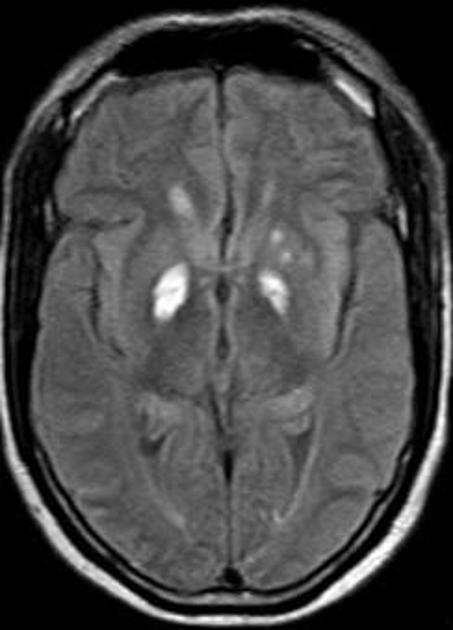
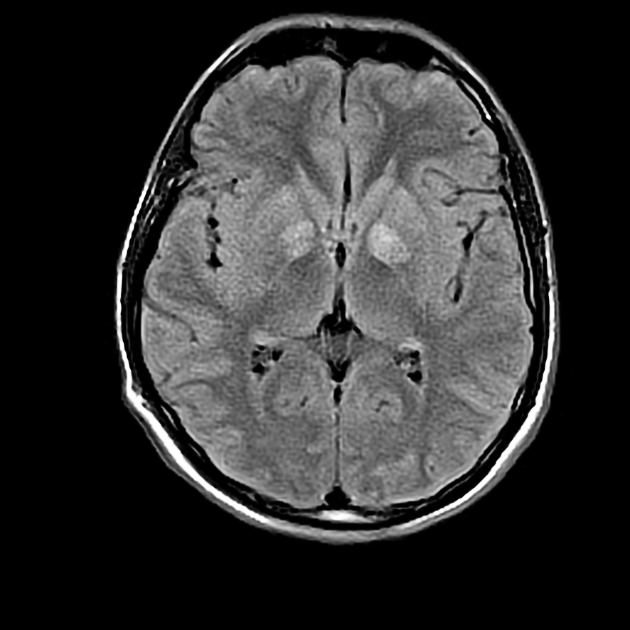
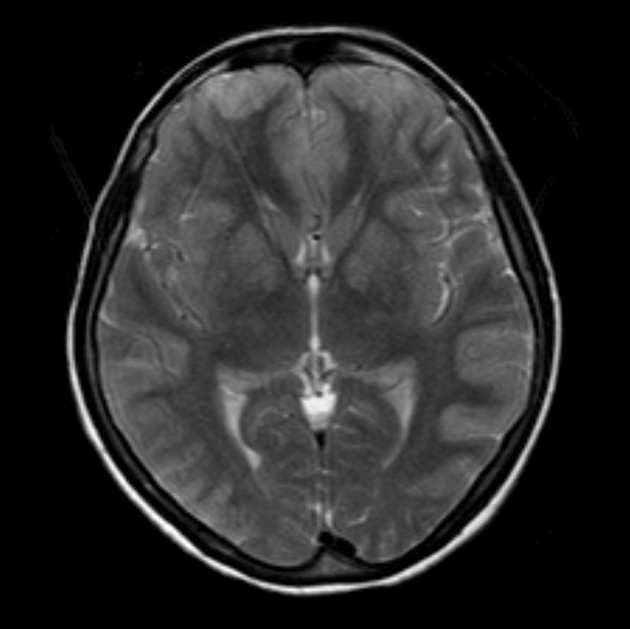
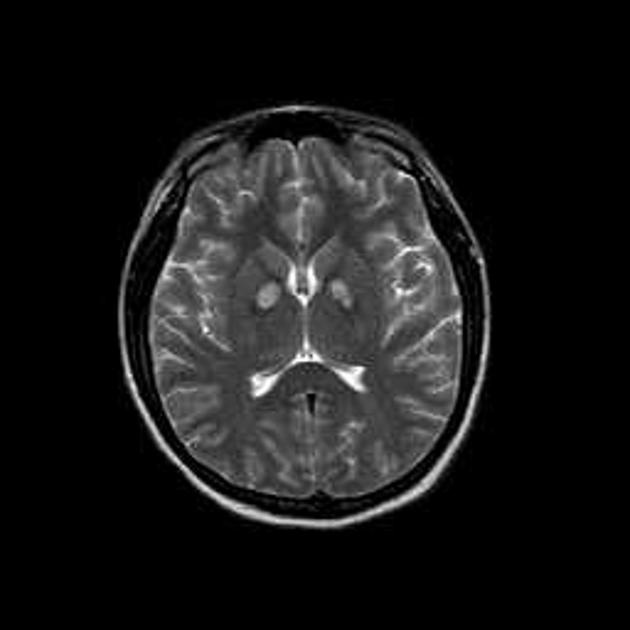
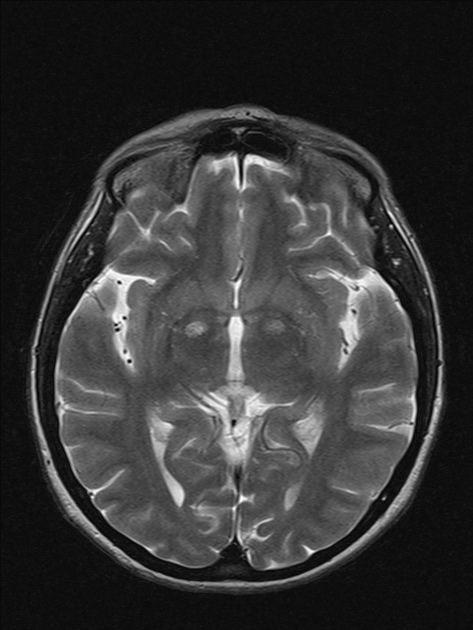
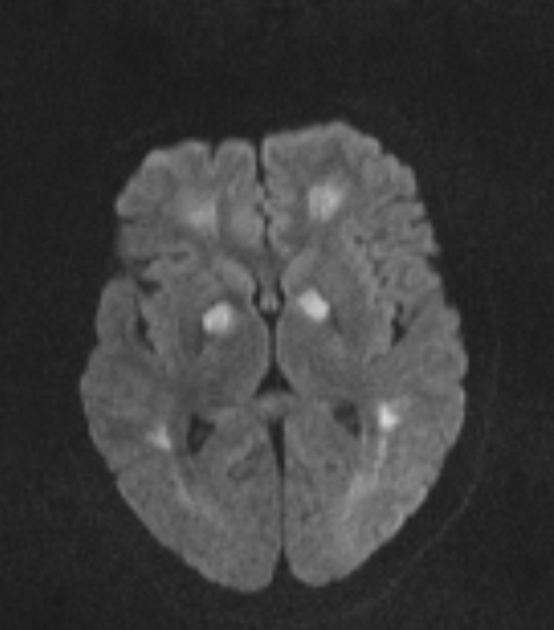
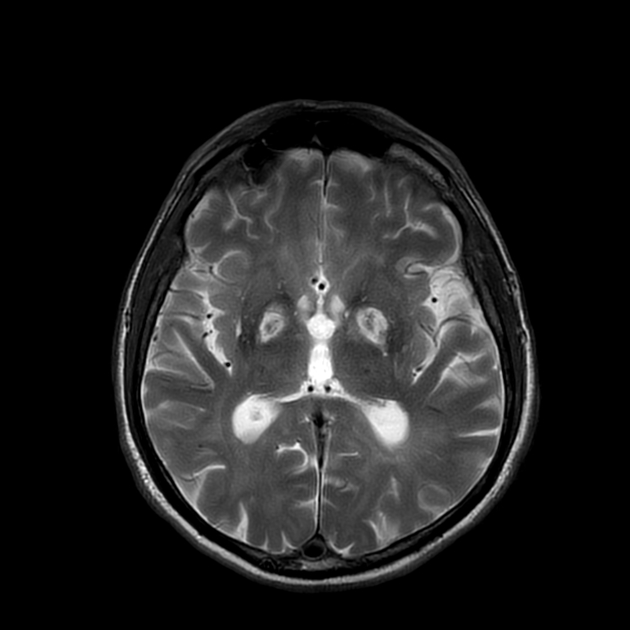


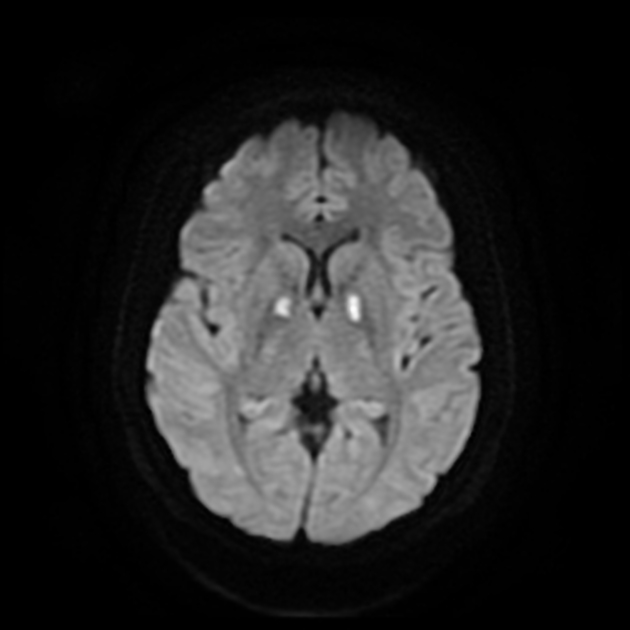
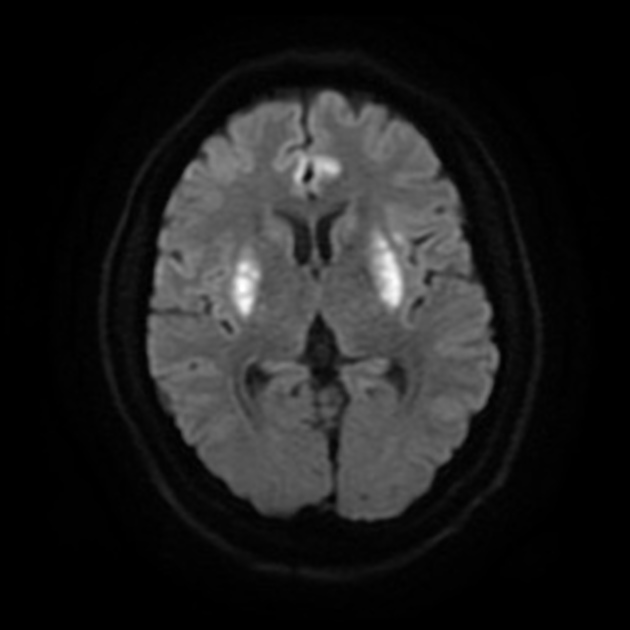

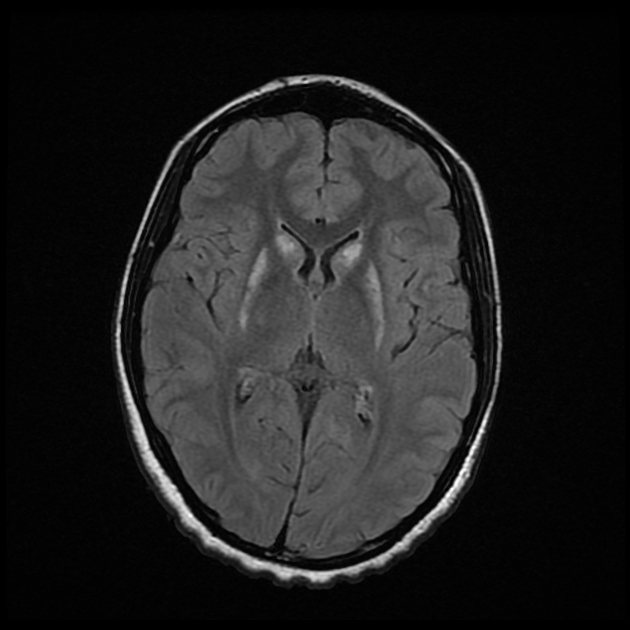


 Unable to process the form. Check for errors and try again.
Unable to process the form. Check for errors and try again.